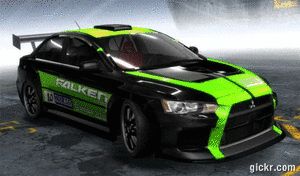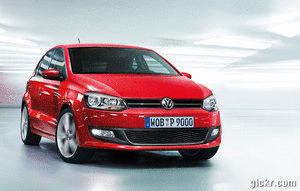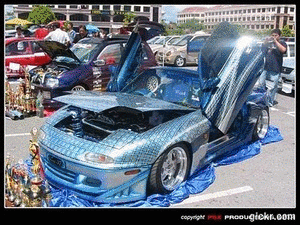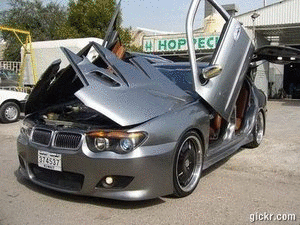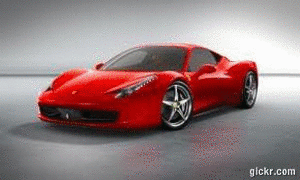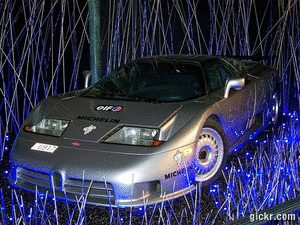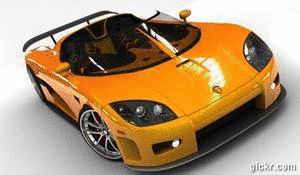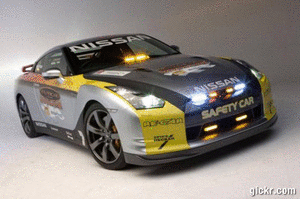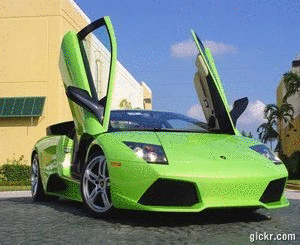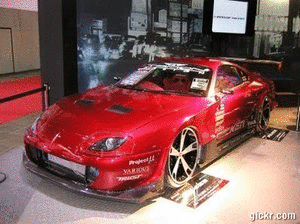|
Geneva, Switzerland — It's already been labelled one of the most beautiful German cars ever conceived, it's already been hailed as one of the most desirable objects on the planet, and it's already getting more attention than a high profile wardrobe malfunction.
And it's not even the production version. We are talking about the BMW M3 Concept, first seen at the 2007 Geneva Motor Show.
This is the BMW M3 everyone has been waiting years for, and though it's a prototype, the majority of the design cues will be remain unchanged for the final production version - so what you see is what you get.
As the photography indicates, its dimensions and fundamental form are based on BMW 3 Series Coupé. Only a few parts are retained from the 3 SeriesCoupé, such as the doors, but from a distance some may find it hard to pick them apart. As BMW explains, it's under the skin that this beast is truly different from the everyday 3 Series Coupé range.
Guenther Seemann, the BMW Group Australia chief, had this to say: "The BMW M3 represents the cutting edge of BMW driving superiority, and the Concept revealed at the Geneva Motor Show is more than a hint of what we can expect to be driving very soon.
"The new high-revving V8 engine, extra-sleek body styling and the high-technology CFRP roof are the highlights of what will be a scintillating driver's package.
"The M3 Coupé has driven its way into the hearts of all hard-core driving enthusiasts around the world and in Australia the previous generation sold in excess of 1,500 examples, underlining its broad appeal in a market segment it created," added Mr.Seemann.
Performance
Following the lead of the Audi RS 4, BMW has dropped a V8 engine into the M3's engine bay, which is claims has been tuned to suit the high revving M concept. At this early stage in the M3's life the details are thin concerning exactly what size the engine is and how much power it will generate, and this concept was exhibited simply to show what the car will look like. The production version is likely to be unveiled - along with its performance (engine and gearbox) vitals - in its home country at the 2007 Frankfurt Motor Show, held in mid September in Germany.
Update: BMW has just released information on the M3's new engine - it's a 4.0-litre V8 that achieves peak power of 309kW.
Though power output is exactly the same as the Audi RS 4's V8 engine, the BMW block is smaller and lighter, which will leave less weight over the front end and potentially improve its driving dynamics.
Here are the vital statistics of the new M3 V8 engine:
 Type: 4.0-litre V8
Type: 4.0-litre V8 Power: 309kW (420hp) @ 8300rpm
Power: 309kW (420hp) @ 8300rpm Torque: 400Nm @ 3900rpm
Torque: 400Nm @ 3900rpm Rev Limit: 8400rpm
Rev Limit: 8400rpm Weight: 202kg (445 lb)
Weight: 202kg (445 lb) Compression ratio: 12.0:1
Compression ratio: 12.0:1
The new engine will only accept 98 octane rated petrol because of its high performance nature, and features infinite camshaft adjustment and hydraulic valve clearance adjustment for intake and exhaust - called double VANOS in BMW's own terms. This intake/exhaust variability in the valvetrain gives the engine incredible flexibility, so in addition to being able to bounce off its freakishly high 8400rpm engine rev limiter, it is generating 340Nm of torque @ 2000rpm.
Peak torque of 400Nm is not quite as much as its direct rival, the Audi RS 4 (430Nm), but all this torque is diverted to two wheels in the BMW M3, instead of four in the Audi RS 4, so it should be a fairly close match on the drag strip.
Some other features of the new engine include eight individual throttle butterflies, which will improve engine response at almost all engine speeds, and lubrication of the pistons is taken care of by a motor sports-inspired system that uses two oil pumps and a wet sump oil lubrication system, which can reliably operate at with up to 1.4 g of both longitudinal (fore/aft) and lateral (sideways) acceleration.
There's a new lightweight exhaust system that optimising cylinder charge (and hopefully gives the M3 a powerful acoustic bark), and the engine block itself is an exotic, and expensive work of mechanical art. Built at BMW's light-alloy foundry in Landshut, the same place where BMW builds the engine blocks for it's Formula 1 racing cars, the cylinder crankcase is made of a special aluminium silicon alloy. This being the case, the conventional cylinder liners are replaced by hard silicon crystals, while the iron-coated pistons run directly in the uncoated, honed cylinder bore.
No zero to 100km/h specs have been released, but a sub 5.0 second time would be achievable if everything BMW says about its new 4.0-litre V8 engine is true. See the two new engine photos on the image panel to the right.
If the rumours are to be believed, the engine will sized somewhere between 4.0 and 4.8-litres and will use architecture similar to that of the 5.0-litre V10 from the M5 and M6 models. Power output will be slightly more than that of its arch-rival, the Audi RS 4, so we can expect a final figure of around 315kW or slightly more than 420hp.
Performance is also still a closely guarded secret, but BMW knows it has to match the Audi RS 4's 4.8 seconds zero to 100km/h sprint time. Anything less would be undignified.
But this is simply an exercise in design, albeit a very attractive one. BMW is clearly proud of its new mid sized performance coupe, whose design highlights include a carbon fibre composite roof. Made of carbon fibre reinforced plastic or CFRP, the roof is much lighter than a typical steel or aluminium version, providing it with all the benefits of a lower weight and centre of gravity.
Other changes to the car include the wider body, which is due to the extending of the cars track, and this improves cornering stability. A new engine hood is also in place, which features a stylised 'power hump' which is flanked by a pair of air vents that will allow heat to more effectively escape the engine bay, while leaving no uncertainty of the cars intent.
Design
From a design point of view, the new M3 Concept is still an honest BMW - it could get around town and no one would pay it too much attention. But the subtle details are what bring it to life, including the new look front apron with larger air intakes, the brawny engine hood, the elimination of fog lamps - typical of the M division, insists BMW - and the larger 19-inch alloy wheels.
Though it's impossible to tell by looking at it, the engine hood is made from aluminium which reduces weight over the front axle, and in combination with the carbon-plastic roof, the new car is expected to very light on its feet.
BMW adds that the sharply defined wheel arches, lateral air slots in the front quarter panels (with M badging) and indicators with chrome brackets are further touches that elevate the M3 Concept from the ordinary.
Characteristic M-brand side skirts provide the side view with an energy-laden accent insists the German car maker, and there's visual emphasis of the rear-wheel drive car with the wider rear wheels, while exclusive exterior mirrors feature a twin stalk support that makes for a more aerodynamic and stylish solution.
Apart from the doors, headlights, tail lights, and boot, the rest of the car is new, featuring slightly different sheet metal to give the car a more muscular look, and the flared wheel arches providing the car with its extra width.
Finished in "chrome shadow" colour, the BMW M3 Concept also features a new rear apron and the trademark M division exhaust pipes, with four outlets just like the V10-powered M5 performance sedan. BMW asserts that the contours of the diffuser combine with the double exhaust tailpipes to create a purposeful rear end, one that pulls the rear together at the centre and build up a tension in conjunction with the horizontal lines of the bumper.

